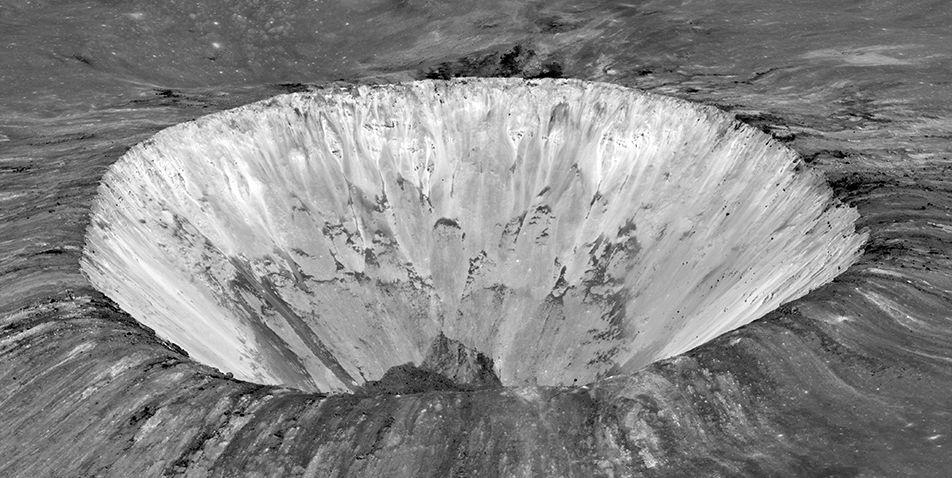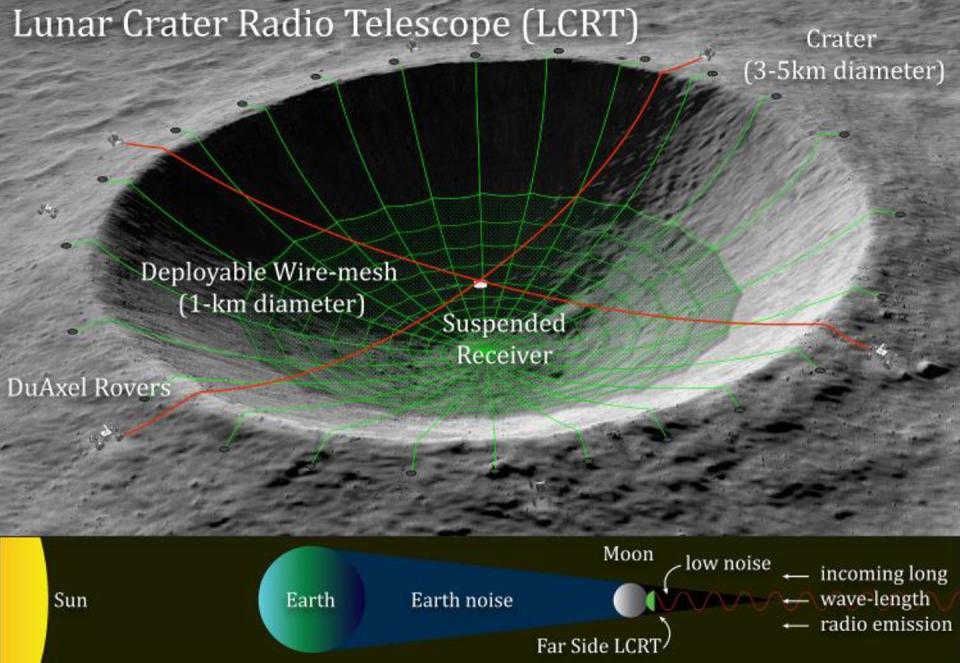Can't Find a Quiet Spot for Your Giant Radio Telescope? Try the Moon.

NASA is funding research on an idea to turn a crater on the far side of the moon, much like the Pierazzo Crater shown above, into a radio telescope.
Two landers and a series of rovers would work in tandem to build the half-mile-wide telescope.
If built, it would become the largest aperture-filled radio telescope in the solar system.
NASA has funded research into an ambitious and strange lunar project. A proposal to build a radio telescope inside a lunar crater on the far side of the moon was submitted to the NASA Innovative Advanced Concepts (NIAC) Program by a researcher at NASA's Jet Propulsion Laboratory in California.
With a diameter of about half a mile, the Lunar Crater Radio Telescope (LCRT) would be the largest filled-aperture radio telescope in the solar system, according to the proposal. Robotics technologist Saptarshi Bandyopadhyay is the brains behind the operation. The report does not identify proposed locations for the telescope.

The Five-hundred-meter Aperture Spherical Radio Telescope (FAST) in Southern China, which booted up last year, is currently the largest filled-aperture telescope on Earth with a diameter of 500 meters, or about 1,640 feet. The famed Arecibo telescope in Puerto Rico is the second largest on the planet with a diameter of about 1,000 feet.
Bandyopadhyay's plan for a ultra-long wavelength lunar radio telescope could revolutionize the way we peer out into the cosmos and hunt for life beyond our solar system. There would almost certainly be interest from large organizations like SETI.
First, it would be able to capture images of the universe at frequencies lower than 30 MHz and at wavelengths greater than 10 meters (about 33 feet), which means more of the cosmos would be opened up to us. The ionosphere blocks these wavelengths from Earth-bound radio telescopes.
Second, any radio interference here on Earth would be blocked by the moon, so there wouldn't be any pesky noise from Earth-orbiting satellites, the ionosphere, or, as Bandyopadhyay notes, the sun (during the lunar night, that is).

Here's how LCRT would work, according to a graphic accompanying the proposal: One lander would plop down at the center of the crater, while another lander would touch down along the crater's edge and deploy a series of mobile rovers called DuAxels. The lander at the base of the crater would unfold, sending guide wires out to meet DuAxel. Once each DuAxel is in place surrounding the crater, they would send hoists down into the crater, link with the guide wires and hoist a mesh telescope to the crater's edge.
Technically, the far side of the moon is already being used for radio astronomy. China's Chang'e-4 mission conducting radio astronomy with the help of the Netherlands-China Low Frequency Explorer (NCLE), which is mounted on China's Queqiao communications satellite in orbit around the far side of the moon.

Bandyopadhyay suggests his Lunar Crater Radio Telescope "could enable tremendous scientific discoveries in the field of cosmology by observing the early universe in the 10– 50m wavelength band (i.e., 6–30MHz frequency band), which has not been explored by humans till-date."
The idea has been awarded PHASE 1 funding from NIAC, so there's still a ways to go. But the fact that it was included at all suggests that NASA is taking the idea seriously.
You Might Also Like


